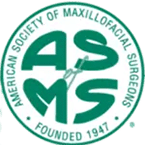- For the first few days, you may apply an ice cold wet washcloth across your eyes to decrease swelling and discomfort. Some patients prefer to put crushed ice in a baggy or use a bag of frozen peas.
- Expect a runny, slightly bloody nose for a few days. Many patients have a slightly “runny nose” for weeks after surgery. Your nose will be “stuffed” for several days to weeks due to internal swelling and crusting.
- Do not remove the nasal splint or tape. It will be removed by Dr. McKinnon in 7 days. Keep the splint dry. But you can wash your face and hair in areas away from the splint.
- Cleanse your stitches and nostrils with a wet Q-tip several times a day and apply Vaseline to the nostril opening and any visible stitches.
- Do not blow your nose for 10 days. If the nose is blown, air maybe forced into the nasal incisions, puffing of the skin and increasing the risk of injury or infection. If you need to sneeze, open your mouth and let the air exit your mouth.
- Saline nose drops can be used to decrease crusts within the nose. They are available over-the-counter in any drugstore. Instill several drops throughout the day in each nostril. Put your head back and let the drops run in. “AYR” is a common brand name.
- You may notice a slightly bloody ooze from under the taped splint near the corner of the eye. This is normal and not a concern.
- You can apply makeup to normal skin to cover bruising but don’t put makeup on incisions or over crusty areas until completely healed and crusts are gone.
- Use water and very diluted Johnson’s No Tear baby shampoo and soap to wash about your eyes and eyelashes to remove any crusting.
- You will have numbness of the tip of your nose for 6 months to one year.
- Most bruising and grossly visible swelling disappears in a week to 10 days but it takes months for things to “settle” completely. Your nose will change for at least 6 to 12 months — becoming smaller and narrower.













